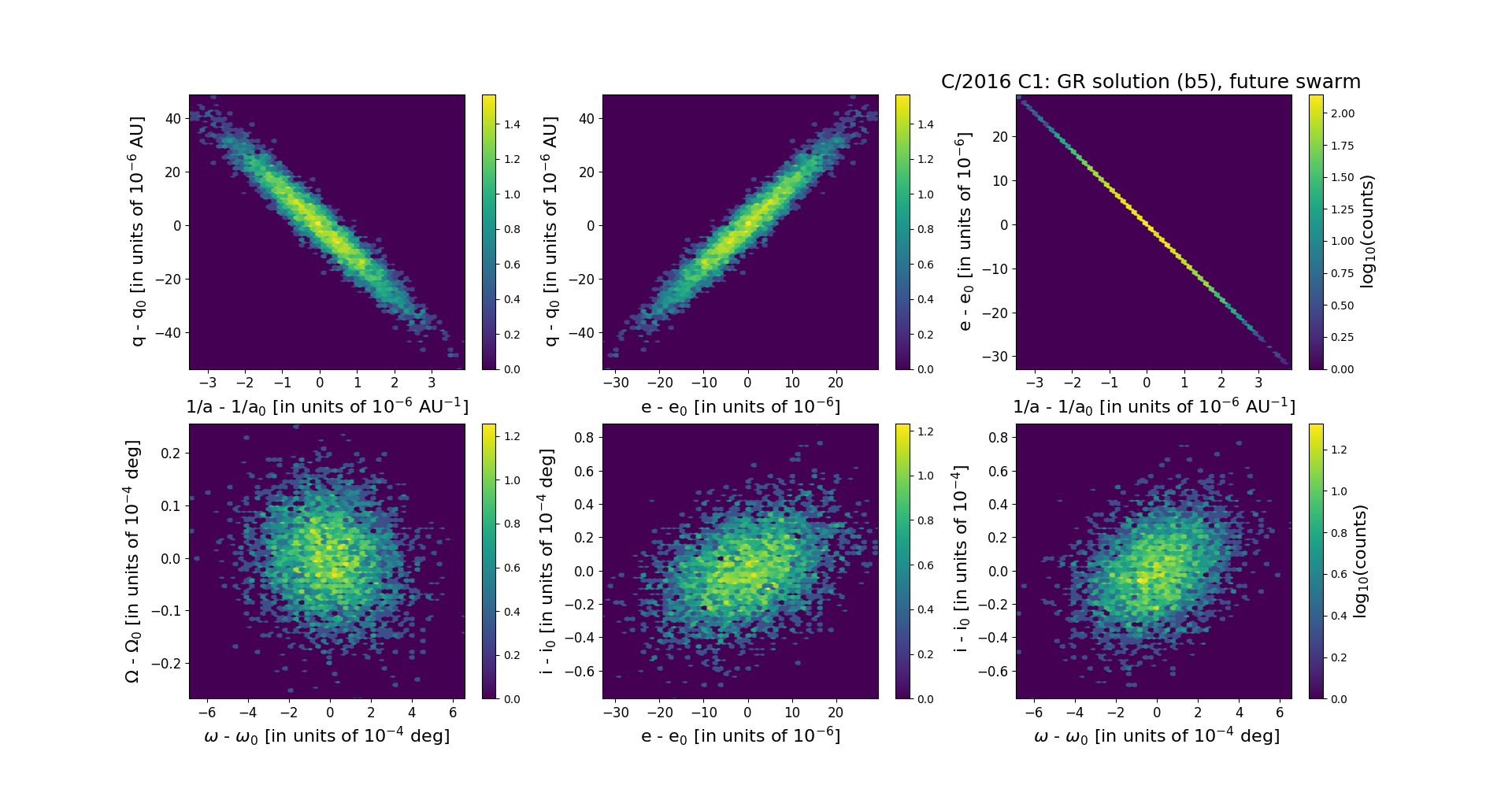C/2016 C1 PANSTARRS
more info
Comet C/2016 C1 was discovered on 12 February 2016 with Pan-STARRS 1 telescope (Haleakala), that is a week before its perihelion passage. This comet was observed until 24 May 2020.
Comet had its closest approach to the Earth on 5 March 2016 (7.572 au), about 2 weeks after its perihelion passage.
The preferred solution given here is based on data spanning over 4.28 yr in a range of heliocentric distances: 8.46 au – 8.46 au (perihelion) – 12.3 au.
This Oort spike comet suffers small planetary perturbations during its passage through the planetary system; however, these perturbations likely lead to escape the comet from the planetary zone on a hyperbolic orbit (see future barycentric orbits).
Comet had its closest approach to the Earth on 5 March 2016 (7.572 au), about 2 weeks after its perihelion passage.
The preferred solution given here is based on data spanning over 4.28 yr in a range of heliocentric distances: 8.46 au – 8.46 au (perihelion) – 12.3 au.
This Oort spike comet suffers small planetary perturbations during its passage through the planetary system; however, these perturbations likely lead to escape the comet from the planetary zone on a hyperbolic orbit (see future barycentric orbits).
| solution description | ||
|---|---|---|
| number of observations | 239 | |
| data interval | 2016 02 12 – 2020 05 24 | |
| data type | significantly more measurements after perihelion (POST+) | |
| data arc selection | entire data set (STD) | |
| range of heliocentric distances | 8.46 au – 8.46 au (perihelion) – 12.26 au | |
| detectability of NG effects in the comet's motion | NG effects not determinable | |
| type of model of motion | GR - gravitational orbit | |
| data weighting | YES | |
| number of residuals | 464 | |
| RMS [arcseconds] | 0.31 | |
| orbit quality class | 1a+ | |
| orbital elements (barycentric ecliptic J2000) | ||
|---|---|---|
| Epoch | 2325 07 12 | |
| perihelion date | 2016 02 17.82009552 | ± 0.00308678 |
| perihelion distance [au] | 8.45579720 | ± 0.00001526 |
| eccentricity | 1.00118568 | ± 0.00000969 |
| argument of perihelion [°] | 328.638174 | ± 0.000175 |
| ascending node [°] | 181.740803 | ± 0.000007 |
| inclination [°] | 56.201432 | ± 0.00002 |
| reciprocal semi-major axis [10-6 au-1] | -140.22 | ± 1.15 |
| file containing 5001 VCs swarm |
|---|
| 2016c1b5.bpl |
